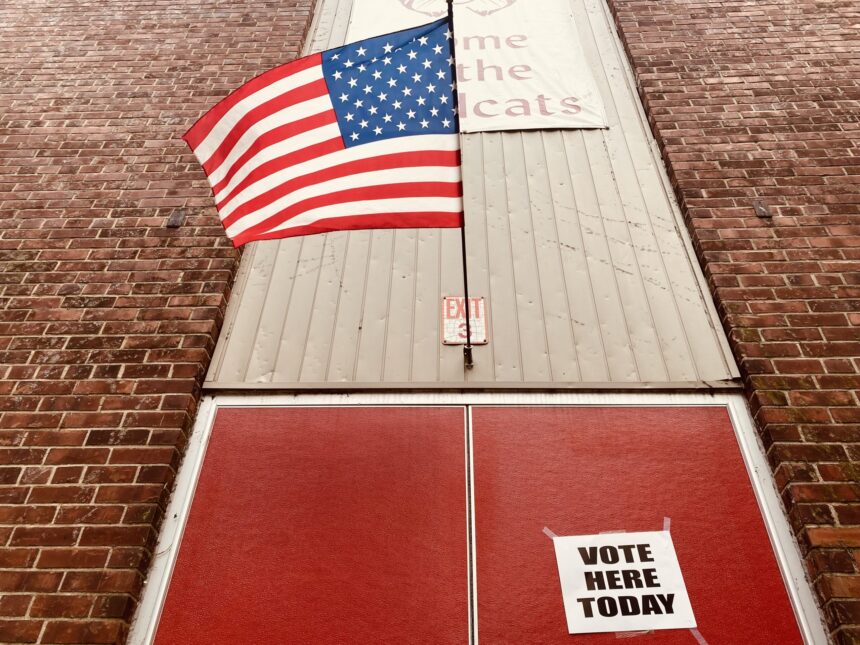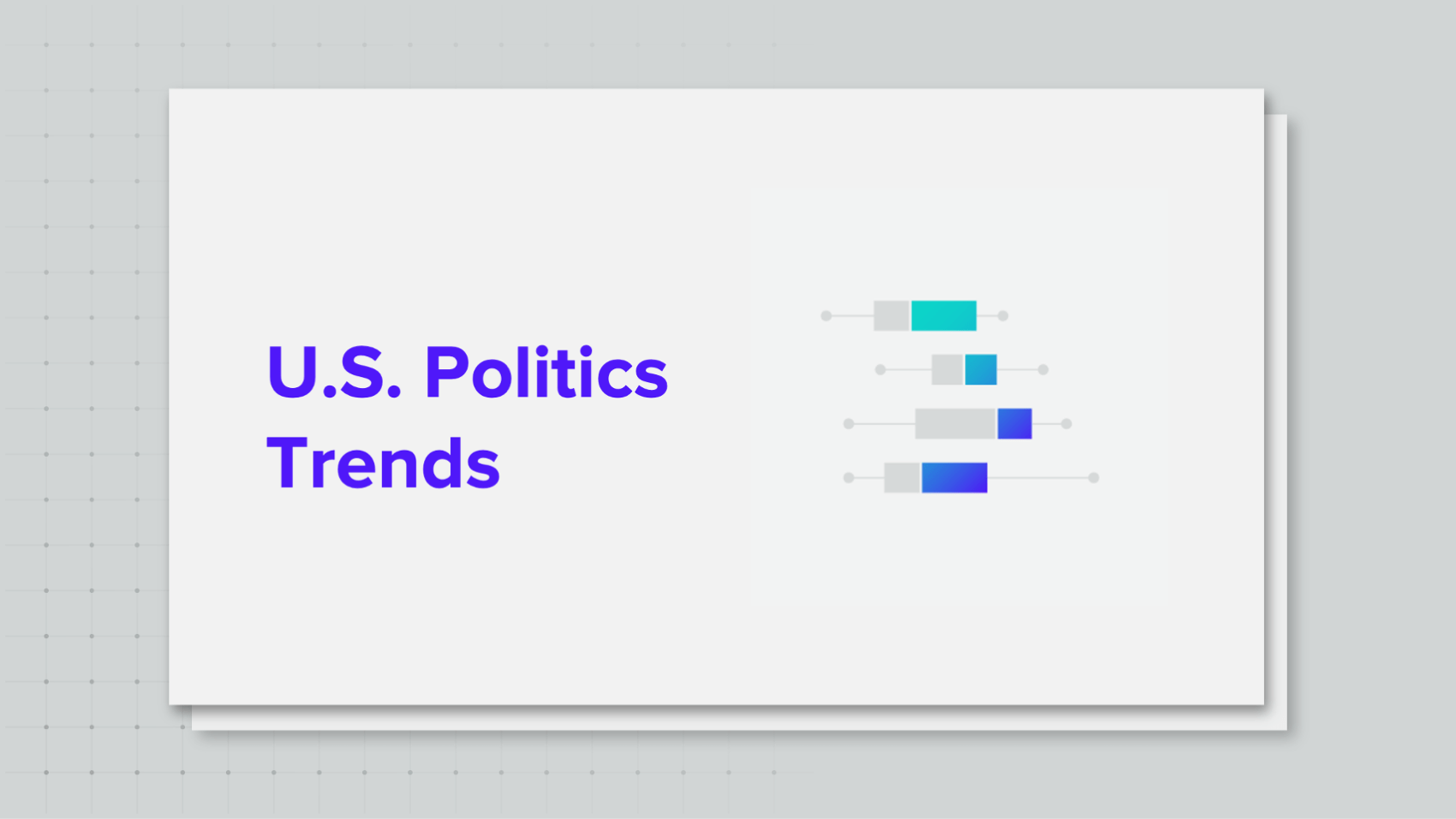With U.S. democracy plagued by extremism, polarization, and a growing disconnect between voters and lawmakers, a set of reforms that could dramatically upend how Americans vote is gaining momentum at surprising speed in Western states.
Ranked choice voting, which asks voters to rank multiple candidates in order of preference, has seen its profile steadily expand since 2016, when Maine became the first state to adopt it. But increasingly, RCV is being paired with a new system for primaries known as Final Five — or in some cases, Final Four — that advances multiple candidates, regardless of party, to the general election.
Together, proponents argue, these twin reforms deliver fairer outcomes that better reflect the will of voters, while disempowering the extremes and encouraging candidates and elected officials to prioritize conciliation and compromise.
Ultimately, they say, the new system can help create a government focused not on partisan point-scoring but on delivering tangible results that improve voters’ lives.
Alaska, the only state currently using RCV-plus-Final Four or Final-Five, appears to be seeing some benefits to its political culture already: After years of partisan rancor, both legislative chambers are now controlled by bipartisan majorities eager to find common ground and respond to the needs of voters, say lawmakers in the state who have embraced the new system.
A slew of other states could soon follow in Alaska’s footsteps. Last year, Nevada voters approved a constitutional amendment that would create an RCV-plus-Final-Five system — for the measure to take effect, voters must approve it again next year.
Efforts also are underway to get RCV-plus-Final-Five on Arizona’s 2024 ballot, and RCV-plus-Final-Four on the 2026 ballots in Colorado and Idaho — where organizers announced Wednesday that they’ve gathered 50,000 signatures (they need around 63,000 to qualify). Even Wisconsin Republicans, who in the redistricting sphere have fought reform efforts tooth and nail, in December held a hearing for bipartisan legislation that would create RCV-plus-Final-Five, though its prospects appear dim.
Meanwhile, Oregon voters will decide next year whether to adopt RCV alone. And this year, Minnesota and Illinois lawmakers passed bills to study RCV, while Connecticut approved a measure that allows local governments to use it.
There are even flickers of interest at the national level. In December alone, two leading Washington, D.C. think tanks that often find themselves on opposite sides — the conservative American Enterprise Institute and the liberal Center for American Progress — each held separate panel discussions that considered RCV-plus-Final-Four/Five.
Katherine Gehl, the founder of the Institute for Political Innovation, and the designer of the Final Four/Five system, calls RCV-plus-Final-Five “transformational.” (Her organization now says advancing five candidates to the general works best, by giving voters more choices.)
“There’s a huge pressure on reformers to say, this is not a silver bullet,” said Gehl. “And OK, I get that.”
But, she added, “I think it’s as close to a silver bullet as you can come.”
Meanwhile, a backlash to reform is brewing, with several Republican-led states banning RCV in recent years. A coalition of national conservative election groups last month warned Wisconsin’s legislative leaders that RCV and Final Five are “intended to dramatically push our politics to the Left.”
Understanding the process
Here’s how RCV-plus-Final-Four/Five works.
In the primary election, candidates from all parties compete against each other, with voters picking only their top choice, as in a conventional election. The top four or five finishers, regardless of party, advance to the general.
In the general, voters use RCV to pick the winner. They fill out their ballot by ranking as many of the candidates as they want, by order of preference.
If no candidate wins a majority of first-place votes, the candidate who finished last is eliminated, and his or her supporters’ second-place votes are allocated. If there’s still no candidate with a majority, the process is repeated with the next-to-last candidate. This continues until someone gains a majority and is declared the winner.
Supporters of the system say the Final Four/Five primary gives a voice to a broader share of voters, while the use of RCV in the general helps ensure a fairer result. Under the current system, two similar candidates together may win a clear majority but split voters between them, allowing a third candidate to win with a minority of votes.
But even more important, many advocates argue, is how the two reforms together can change how candidates and elected officials of all stripes approach their jobs, by adjusting the incentive structure they operate under.
Increasingly, many states and districts are solidly red or blue, meaning the general election is uncompetitive, and the key race takes place in the primary. That’s a problem, because the primary electorate is by and large smaller, more partisan and more extreme than the general electorate.
Right now, with politicians worrying more about the primary than the general, they’re more focused on playing to their base than on reaching beyond it and solving problems, critics argue. It isn’t hard to find evidence for this lately, both in Washington and in state capitals across the country.
By allowing multiple candidates to advance, Final Four/Five shifts the crucial election from the primary to the general. And RCV means the votes of Democrats in red districts and Republicans in blue ones still matter, even if their top choice remains unlikely to win.
Together, it means candidates are rewarded for paying attention to the entire general electorate, not just a small slice of staunch supporters. As a result, it encourages candidates — and elected officials, once in office — toward moderation and problem-solving, and away from extremism.
“People do what it takes to get and keep their jobs,” said Gehl, the Final Four/Five designer. “So if you change who hires and fires, which is to say, November voters instead of primary voters, and you change the system so that there’s real competition in November every time, even once you’re an incumbent, that forces accountability.”
A success story from the Last Frontier?
The experience of Alaska, whose voters passed an RCV-plus-Final-Four system in 2020, offers an illustration.
At its first use in 2022, U.S. Sen. Lisa Murkowski, an independent-minded Republican distrusted by the party’s conservative wing, was reelected. Mary Peltola, a moderate Democrat who kept in place her Republican predecessor’s chief of staff, was elected to the U.S. House, defeating Sarah Palin, the conservative Republican former governor. (Murkowski and Peltola endorsed each other).
Meanwhile, voters reelected Gov. Mike Dunleavy, a conservative Republican – suggesting, reformers say, that the system can produce a wide range of outcomes.
And more women ran in 2022 than in the five previous cycles combined — highlighting how allowing anyone to run, regardless of party, can boost opportunities for under-represented groups.
But the effect on how candidates and lawmakers have approached their jobs has been more dramatic still, advocates say.
Senate Majority Leader Cathy Giessel, a Republican, told the Center for American Progress event that, after angering GOP voters by working collaboratively with Democrats, she lost her 2020 primary, held under the old election system, to a staunch conservative. Giessel had been in office since 2011.
Giessel said that when she ran again last year under RCV-plus-Final-Four, her campaign didn’t even buy the database showing voters’ party affiliations that most candidates rely on to identify supporters, because she needed to target voters of all stripes. Helped by being the second choice of many Democratic voters in the general election, Giessel won back her seat.
“You’re requiring us as candidates to be much more authentic,” said Giessel of the new system. “We’re not speaking to a party platform anymore. We’re speaking to the citizens.”
Giessel now leads a bipartisan majority coalition, formed within days of the election. Members have focused on consensus issues that are priorities for voters, including boosting education funding, lowering the cost of energy and passing a balanced budget.
“We have seen much more collaboration on the budget,” said Giessel. “There’s a much more open process now, understanding that everyone needs to have input.“
An analysis by the R Street Institute, a center-right Washington, D.C. think tank, found that Alaska’s new election system “gave citizens greater choice and elevated the most broadly appealing candidates, in turn improving representation.”
Reformers in Nevada — gearing up for next year’s campaign to pass RCV-plus-Final-Five a second time after it won with 53% of the vote last year — have noticed Alaska’s early success.
Over 40% of all registered voters in the Silver State aren’t affiliated with a major party, and the figure is growing. It was these voters’ frustration over being denied a voice in the state’s taxpayer-funded closed primaries that initially drove the push for reform, said Mike Draper, the communications director for Nevada Voters First, a political action committee that organized the ballot measure.
As in Alaska and elsewhere, there was also a related concern about politicians playing only to their base.
“Candidates and electeds, through no fault of their own, are not incentivized to … work to solve problems,” said Draper. “The primary incentive is to make sure they stay in the good graces either of the party, or of that fringe group that’s active in the primaries.”
Top figures in both major parties, including Nevada’s Republican governor and its two Democratic U.S. senators, oppose reform. A lawsuit brought by Democratic super-lawyer Marc Elias that aimed to keep the measure off the 2022 ballot was rejected by a judge.
‘A scheme of the Left’?
Though elected Democrats in Nevada and some other blue states have come out against reform, the most vocal opponents have been red-state Republicans and national conservative groups. They argue it would confuse voters and further reduce confidence in election results.
Some even see a progressive plot. An October analysis by the conservative Foundation for Government Accountability called RCV a “scheme of the Left to disenfranchise voters and elect more Democrats.”
Florida, Tennessee, Idaho, Montana, and South Dakota — all Republican-controlled states — have passed legislation in recent years to ban RCV. Arizona’s GOP-controlled legislature also passed an RCV ban, but it was vetoed by Gov. Katie Hobbs, a Democrat.
In Alaska, conservatives have launched a campaign to advance a ballot measure repealing their state’s reform. Palin, who has blamed the system for her loss to Peltola last year, calling it “wack,” is playing a prominent role in the effort.
Still, advocates say there are also signs of emerging interest among some Republicans in other states.
Last year, the GOP lost several winnable statewide races after primary voters nominated extremists like Doug Mastriano in Pennsylvania and Kari Lake in Arizona. Now, some in the party think reform could allow them to advance more electable candidates.
“Even among Republicans, I’ve had my fair share of conversations where they are starting to recognize that the system isn’t putting forward candidates who are necessarily the best general election winners,” said Matt Germer, an associate director and elections fellow at the R Street Institute.
“So there’s even some growing interest among Republican electeds to say, hey, what we’re doing now is not growing our party. And if we really want to change our country, we’re going to need to grow our party, and that means appealing to enough voters to win elections.”




